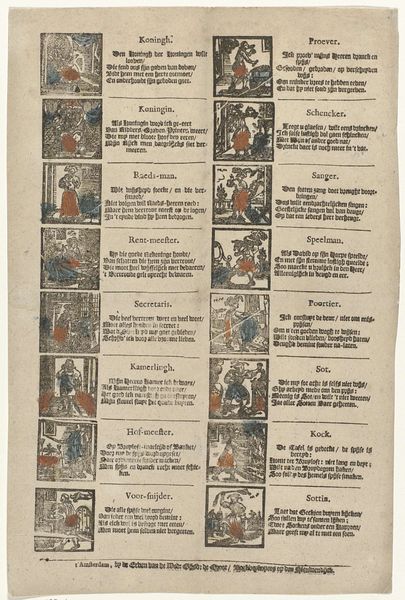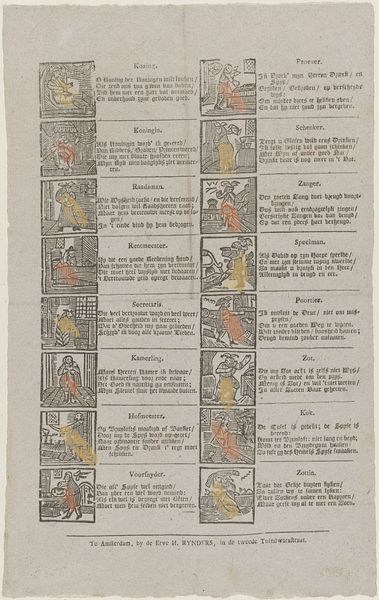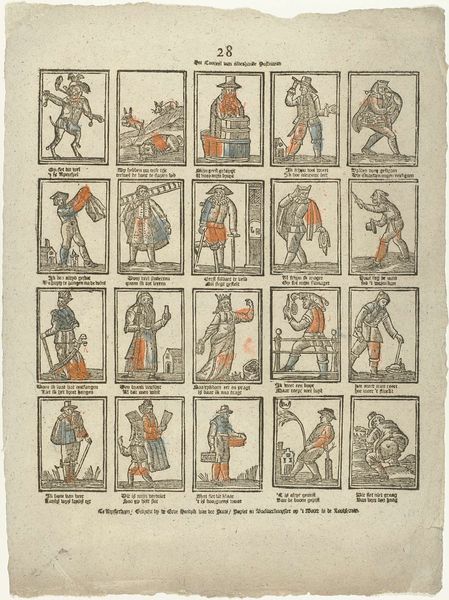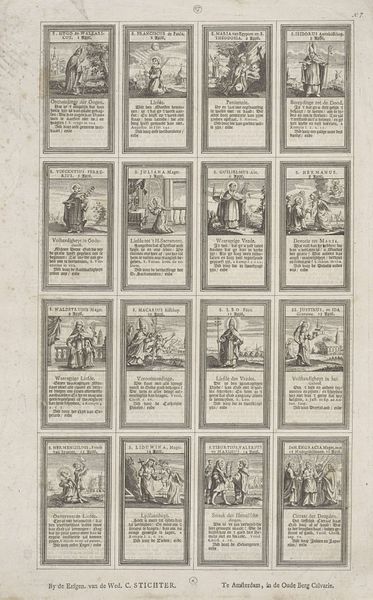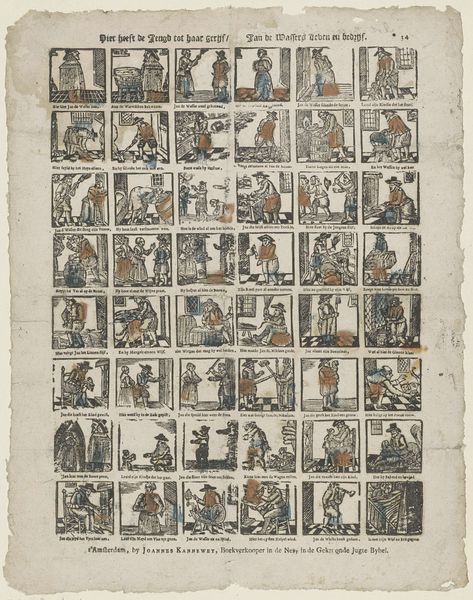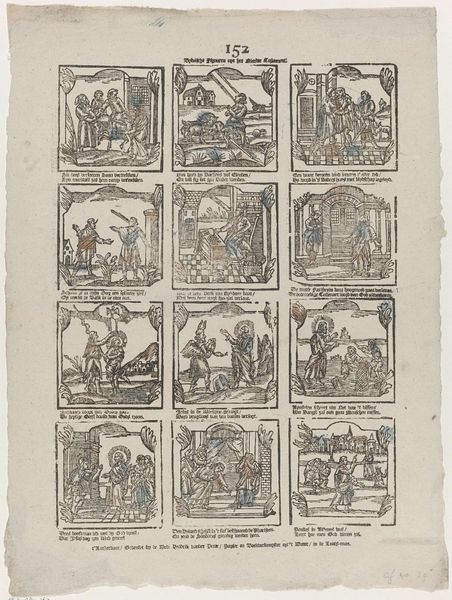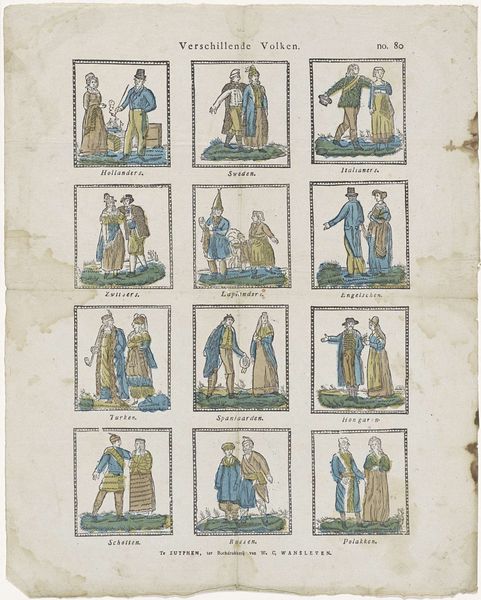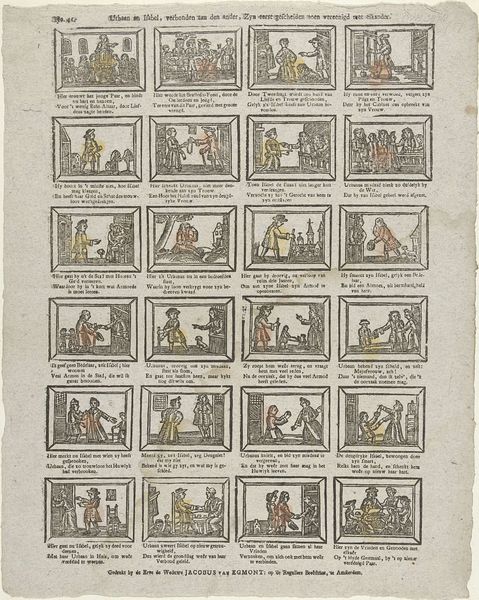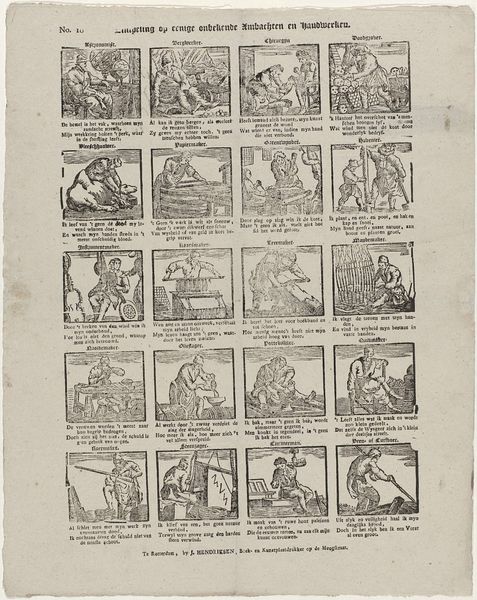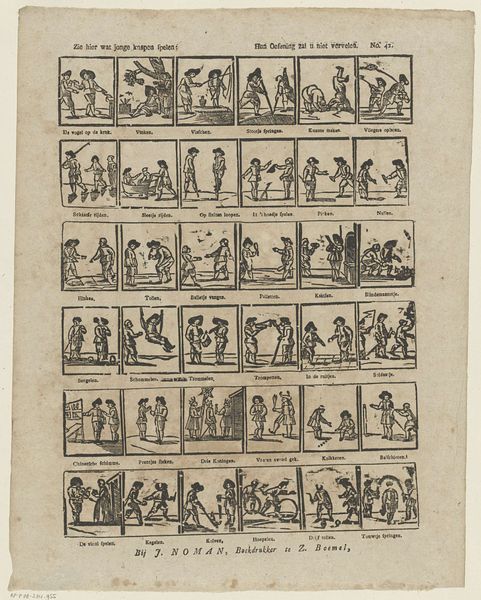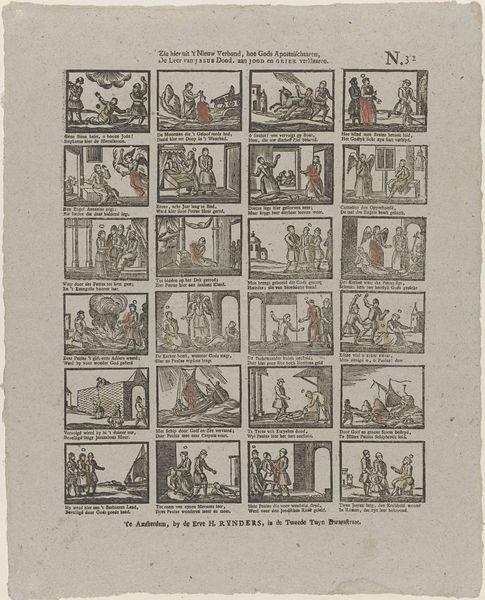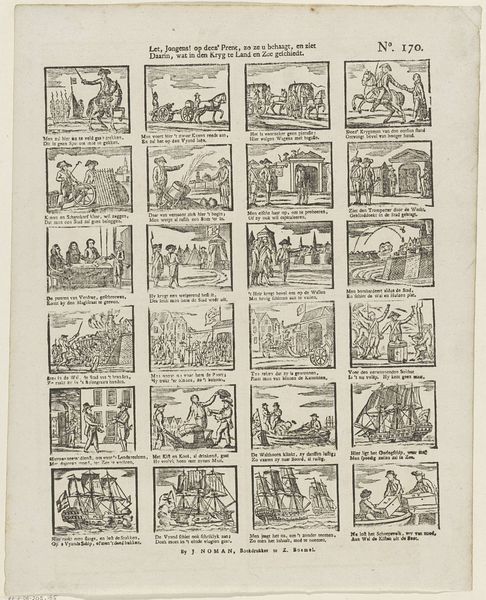
graphic-art, print, engraving
#
graphic-art
#
comic strip
# print
#
comic
#
genre-painting
#
engraving
Dimensions: height 310 mm, width 215 mm
Copyright: Rijks Museum: Open Domain
This is 'Driekoningenbriefjes', a print made by the widow Hendrik van der Putte in Amsterdam. It is undated but likely originates from the 17th century. The print is arranged as a grid filled with small images and text blocks. Each block contains a figure representing a different profession or social role, such as a king, queen, cook, or fool. The composition is structured by a series of boxes, each acting as a stage for a character. This orderly arrangement contrasts with the implied chaos of social roles and human nature. The limited colour palette focuses attention on the lines and forms, enhancing the print's symbolic qualities. The rough texture of the print adds to its historical feel, rooting it in a specific time and place. The print functions as a semiotic system. Each character is a sign, a coded message that communicates specific ideas about social hierarchies and human archetypes. The use of archetypes challenges fixed meanings, inviting viewers to reflect on their own social roles. This interplay between structure and content creates a space for interpretation, reflecting broader artistic and philosophical concerns of its time.
Comments
No comments
Be the first to comment and join the conversation on the ultimate creative platform.
